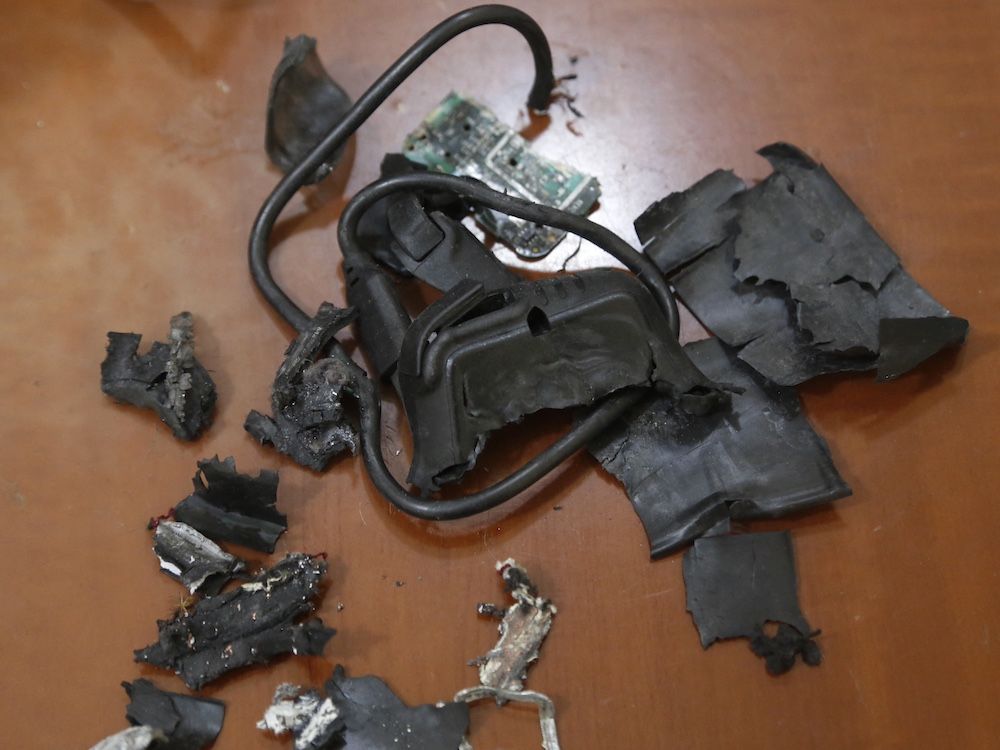Tara MacDonald: B.C.’s Poverty Reduction Strategy has a 10-year goal to reduce the child poverty rate by 75 per cent — that's admirable but 10 years is a long way away.
Published Sep 05, 2024 • Last updated 0 minutes ago • 4 minute read

This year, kids living in Vancouver’s Downtown Eastside were asked what they wanted to see more of in their neighbourhood. They said things like, “flowers,” “phones,” “clean spaces” and “food.”
These kids are among the 62,000-plus children currently experiencing poverty in Metro Vancouver. Families are especially feeling the pinch at this time of year, when students go back to school.
Advertisement 2
THIS CONTENT IS RESERVED FOR SUBSCRIBERS ONLY
Subscribe now to read the latest news in your city and across Canada.
- Unlimited online access to articles from across Canada with one account.
- Get exclusive access to the Vancouver Sun ePaper, an electronic replica of the print edition that you can share, download and comment on.
- Enjoy insights and behind-the-scenes analysis from our award-winning journalists.
- Support local journalists and the next generation of journalists.
- Daily puzzles including the New York Times Crossword.
SUBSCRIBE TO UNLOCK MORE ARTICLES
Subscribe now to read the latest news in your city and across Canada.
- Unlimited online access to articles from across Canada with one account.
- Get exclusive access to the Vancouver Sun ePaper, an electronic replica of the print edition that you can share, download and comment on.
- Enjoy insights and behind-the-scenes analysis from our award-winning journalists.
- Support local journalists and the next generation of journalists.
- Daily puzzles including the New York Times Crossword.
REGISTER / SIGN IN TO UNLOCK MORE ARTICLES
Create an account or sign in to continue with your reading experience.
- Access articles from across Canada with one account.
- Share your thoughts and join the conversation in the comments.
- Enjoy additional articles per month.
- Get email updates from your favourite authors.
Sign In or Create an Account
or
Article content
The list of needs seems to grow larger with each passing year: new clothes, shoes, calculators, even basic supplies like backpacks and markers.
In a recent survey of Canadian parents of students from kindergarten to Grade 12, nearly half of parents surveyed said they expected to spend $500 or more on back-to-school shopping. That’s too expensive for families already stretched thin trying to afford basic necessities amid the rising cost of living in Vancouver.
“Kids are resilient, but when they don’t have the essential items they need to focus on learning and thrive at school, that can have a great impact,” says Thomas Gaster, children and youth community chaplain for Union Gospel Mission’s Women & Families Centre.
“Lacking school supplies can cause children to feel embarrassed or can affect their motivation for school work. Lacking proper nutrition because their families can’t afford lunch can lessen their energy and ability to focus in class.”
And it’s not that parents aren’t doing all they can for their kids — they are. Parents are working extra jobs and visiting food banks to put food on the table. But still, poverty persists.
By signing up you consent to receive the above newsletter from Postmedia Network Inc.
Article content
Advertisement 3
Article content
Poverty is systemic in Canada, and it’s not hard to see why when we look at the affordable housing crisis, the ever-rising prices of groceries and gas, inequity in the job market and a gender pay gap.
With such a complex problem, all levels of government need to be proactive as the number of people who are impacted by poverty increases.
The different COVID-19 supports like the Canada Emergency Response Benefit and the enhanced Canada Child Benefit contributed to a decrease in Canada’s poverty rate: from 14.5 per cent in 2015 to 8.1 per cent in 2020. In order to sustain that decrease and help families live above the poverty line, poverty reduction groups recommend further investments in increased family benefits, as well as social and disability assistance.
The need for updated assistance rates was acknowledged in B.C.’s 2024 Poverty Reduction Strategy, but the question is when and by how much? The strategy’s 10-year goal to reduce the child poverty rate by 75 per cent, and the overall poverty rate by 60 per cent is admirable — but kids are already back at school this week, and 10 years is a long way away.
Advertisement 4
Article content
There needs to be more urgent and targeted action now to fill the gaps. Community organizations like Union Gospel Mission aim to fill the gaps for people living in poverty. Every month this year, over 300 emergency food hampers have gone out to families in need in the DTES. Other items given to families include diapers and baby food.
“This should concern all of us,” says Gaster, who works with families in need, “Parents shouldn’t have to choose between diapers and food. Food is a human right.”
Families living in poverty need many things; they need affordable homes, they need affordable child care, they need increased government assistance, they need the opportunity to make a living wage that allows them to thrive, not merely survive. They also need community. This back-to-school season, the dollars donated to the UGM will be able to go toward backpacks and school supplies for kids who might not otherwise get those items.
The kids who were asked what they wished to see more of didn’t only talk about material items. Among the answers were also “love,” “kindness” and “helping.” Unlike the other items that have a cost, these things are free.
Advertisement 5
Article content
So this year, as students enter classrooms, may the adults consider why some of their backpacks might not be so full. This year — not 10 years from now — is the year for those in government, those in community organizations and everyone in B.C. to advocate and make change. Child poverty, as B.C. has seen, won’t wait.
Tara MacDonald is vice-president of women and families programming at Union Gospel Mission.
Recommended from Editorial
-

B.C. students 'going to feel the pinch' from teacher shortages: Union
-

Back-to-school fuel means starting the day off right with a good breakfast
Bookmark our website and support our journalism: Don’t miss the news you need to know — add VancouverSun.com and TheProvince.com to your bookmarks and sign up for our newsletters here.
You can also support our journalism by becoming a digital subscriber: For just $14 a month, you can get unlimited access to The Vancouver Sun, The Province, National Post and 13 other Canadian news sites. Support us by subscribing today: The Vancouver Sun | The Province.
Article content
.png)
 2 weeks ago
14
2 weeks ago
14



































 Bengali (BD) ·
Bengali (BD) ·  English (US) ·
English (US) ·